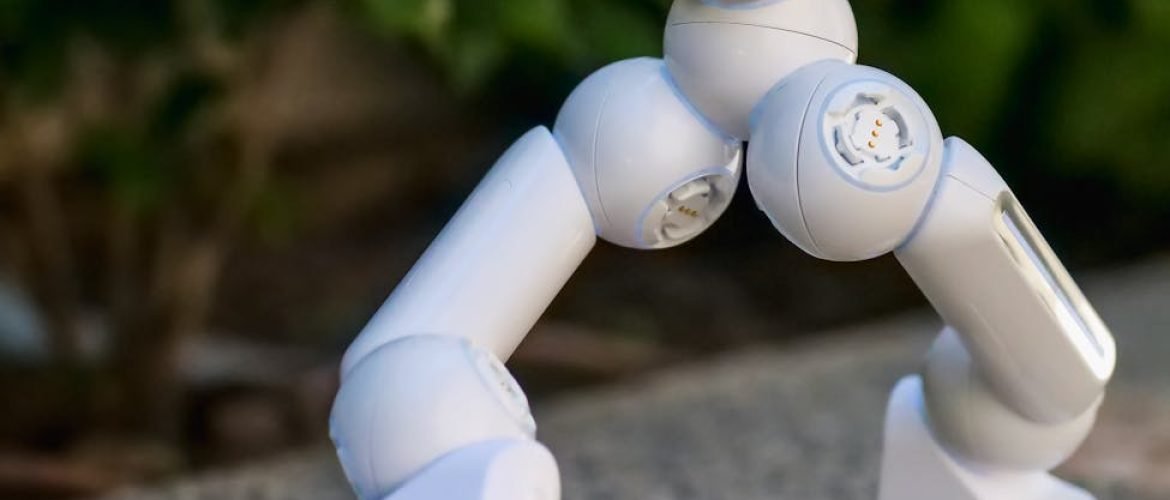Understanding Autonomous Systems
Definition of Autonomous Robotics
Autonomous robotics is all about smart machines doing stuff without you hollering at ’em. These bad boys can think on their own, dodge stuff, and get the job done just by looking around, much like your trusty Roomba vacuuming up the crumbs and then buzzing back home to recharge (Locus Robotics).
You’ll find these clever contraptions in places like factories, space missions, hospitals, and even mines or farms, doing work that used to be only for folks (AIST). They’re the MVPs because they keep folks out of harm’s way, speed up processes, and get comfy fast with whatever’s tossed their way.
Role of AI and Robotics
AI is the secret sauce in making robots actually “get it.” Thanks to AI, these bots can chew through info, pick up some smarts from past gigs, and act like they know what’s what without you keeping an eye on ’em all the time.
Take self-driving cars. They use AI to figure out what’s what from all those gadgety sensors so they don’t go playing bumper cars in traffic (Consensus). Those brainy bots are also finding their groove in farming, scanning crops, checking out soil vibes, and even picking fruit on their own.
The gadgets (aka sensors) are like the eyes and ears for these robots. They clue bots in about the world around ’em, spotting obstacles and knowing where to step next. With AI, this sensory scoop is transformed into smarter, faster robot moves.
The future of AI and robots looks like a sci-fi flick but more friendly. They’ll pick up on more brainy functions, sidling up next to humans at work, doing more than just taking care of the small stuff (Simplilearn).
If this got your gears turning, check out more on ai-powered systems, self-driving cars, or drone automation.
| Key Terms | Definition |
|---|---|
| Autonomous Robotics | Cool machines rolling solo, no human needed. |
| Artificial Intelligence | Tech that lets robots think and act smart. |
| Sensor Technology | The stuff that tells robots what’s going on around them. |
Peek inside autonomous robotics and see how AI and robots are shaking things up, cranking up the efficiency, keeping folks safe, and bringing new ideas to the table.
Applications of Autonomous Robots
Industrial Utilization
Autonomous robots are shaking things up in the industrial scene. In those big factories and bustling warehouses, AMRs, or Autonomous Mobile Robots, are chipping in to make the job smoother. Giants like the auto industry and our food & drink buddies find these little helpers quite nifty:
- They keep products safe from damage
- Cut down what they need to spend on workers
- Kick productivity up a notch
- Handle the boring chores no one likes doing
These robots come packed with clever sensors and smart algorithms to find their way around without bumping into stuff, making decisions on the fly (SCIO Automation). That means less meddling from us humans, which means things run way more smoothly.
| Industry | What AMRs Do |
|---|---|
| Automotive | Protects stuff, slashes labor costs |
| Food & Drinks | Pumps up productivity, handles processes |
| Warehousing | Simplifies tasks, boosts safety |
Want the lowdown on autonomous mobile robots? Swing by to see how they’re shaking up different industries.
Advancements in Healthcare
In healthcare, these robots are no less than a game-changer. They step up in roles like:
- Executing surgeries with laser-like accuracy
- Ferrying medication and supplies around the hospital
- Lending a hand in rehab sessions
With brains full of AI and noodling through Machine Learning, they tackle tasks like surgery with a precision that gives human slip-ups a run for their money. Besides, those tiny delivery bots zip around, making sure patients get their meds right on time, making hospital life a bit easier (Simplilearn).
In rehab, robots dish out personalized exercises, adjusting them according to how you’re doing, showing they’ve got healthcare worker vibes too.
Check out more about these smart systems in action by visiting ai-powered autonomous systems.
Impact on Transportation
Autonomous robots are kicking things into high gear in transport. Self-steering tech and driver-less cars are the talk of the town, offering:
- Better safety by cutting out human slip-ups
- Smooth traffic flow
- Leaner costs for logistics
These vehicles link up sensors, cameras, and Machine Learning to see everything around them and keep moving without a hitch. They’re sparking change in public transport, ride-hailing apps, and moving goods (AIST).
| Application | Benefits |
|---|---|
| Self-Driving Cars | Upsafety, less driver goofs |
| Public Transport | Smooths traffic, flexible ride-sharing |
| Freight Logistics | Trims costs, makes delivery zippier |
Curious how autonomous vehicle technology is rewriting the rules of transportation? Check it out for more on this hot trend.
Seeing how autonomous robotics is weaving into industries, healthcare, and transportation shows just how much they’re shaking things up and opening doors for economic moves and fresh workforce setups. For more futuristic vibes, wander over to the evolution of robotics.
Challenges in Developing Autonomous Systems
When you’re getting into the world of self-driving robots, you’ll hit a bunch of crazy challenges. Let’s chat about three main ones: getting sensors to play nice, teaching these robots to learn on their own, and making sure they’re not going to crash (or get hacked).
Sensor Fusion and Localization
Figuring out how to combine all the different sensor data is like herding a bunch of cats – tricky at best. The robots have to take info from cameras, LiDARs, and more to get a crystal-clear picture of what’s around them. But getting them to agree on what’s what can be a real headache.
Sensor Types and Challenges:
| Sensor Type | What It Does | Roadblocks |
|---|---|---|
| Cameras | Snaps pics | Can’t see well in bad light or when blocked |
| LiDAR | Measures how near stuff is | Hard to interpret the data |
| Ultrasonic Sensors | Spots objects | Short-sighted and not too sharp |
| Inertial Measurement Units (IMUs) | Tells how it’s moving | Loses track over time |
For more about how these bots see the world, check out Boston Dynamics. Nailing this sensor game is key if you want your robots to know where they are and how to get around, much like in the realms of autonomous vehicle tech and drone automation.
Learning Algorithms
Teaching robots to think for themselves is no walk in the park. They need to handle all the weird stuff the world throws at them, and you can’t possibly crunch all that info into them ahead of time.
Things to keep in mind:
- Supervised Learning: Tons of labeled data needed.
- Unsupervised Learning: Hard to make sense of things accurately.
- Reinforcement Learning: Eats up a ton of computing power and time working out in the real world.
Creating these brainy algorithms is crucial for revving up self-driving cars and other smart tech. Explore more at self-driving technology.
Software Engineering and Cybersecurity
Making sure robot brains work without a hitch is super important. These robot systems are complicated, and every bug or gap is a potential disaster zone.
Tough Nuts to Crack in Software Engineering:
| Challenge | What’s the Deal? |
|---|---|
| Software Complexity | Loads of intricate code to juggle |
| Real-Time Processing | Instant reactions are a must |
| Reliability and Redundancy | Constant operation without a hiccup |
Keeping these systems safe from hackers is key – you don’t want someone taking the wheel. Keeping them solid and trustworthy is a top priority. If you’re curious about building AI safely, check out our piece on AI-powered autonomous systems.
Tackling these hurdles is a big deal if you want robots to work reliably in the real world. Knowing the nuts and bolts will help you make your mark in the fast-paced field of robot tech.
Future Outlook of Autonomous Robotics
Evolution of Robotics
Autonomous robotics is on the brink of some mind-boggling changes that could totally redefine tomorrow. With AI getting bigger brains and speedier thinking thanks to machine learning, robots are turning into some seriously impressive gadgets. These machines are cutting down on the need for you to do the boring stuff, letting them handle complex tasks with textbook precision and ramped-up efficiency.
Robots aren’t just factory workers anymore; they’re sneaking into your everyday life too. Whether it’s factory floors, cars that drive themselves, or bots doing data input, robots are changing the game. In industries, these machines are handling the tedious jobs humans used to, ramping things up in terms of speed and safety (self-driving technology, autonomous vehicle technology). Over in the medical world, robotic systems are doing everything from surgery to patient care, and even keeping tabs on quarantine processes (AI-powered autonomous systems).
Looking forward, the tech in sensors, AI, and machine learning keeps getting slicker. Soon, you’ll see robots that can make sense of their surroundings like they’d just discovered the wonders of the universe — opening doors to innovations in drone automation and self-driving cars.
Economic and Workforce Implications
Autonomous robots aren’t just tech wizards; they’re shaking up your economic vibes too. The World Economic Forum says that by 2025, AI and robotics will fire up 12 million jobs more than they cut. This uptick spells fresh job vibes, economic boons, and a surge in output. But — and it’s a hefty but — this transition is gonna give the workforce a ride for its money.
| Factor | Stat |
|---|---|
| Job Growth | 12 million new spots by 2025 |
| Pay Check Dip | Wages down by 0.42% with each robot in every 1,000 workers |
| Employment Numbers | A 0.2-point dip in the employment-to-pop ratio per robot |
In the U.S., every new robot among 1,000 workers nudges pay down by 0.42% and trims the job-to-population ratio by 0.2 percentage points. So while robots might be a ticket to economic growth, they could also mean stagnant pay and work hurdles in some areas.
Folks with and without college badges will feel the shift, but the latter group might face bigger hurdles. As robotics, AI coding, and engineering skills are in demand, you’ll need to get on the upskill and reskill train.
Autonomous robotics will shake the economic landscape, paving the way for tweaks in policies, education, and job training. Stay clued in and ahead of the game, and you can turn these shifts into your personal gain in the changing job sphere.
For more nuggets on autonomous systems and their potential, check out our other pieces on autonomous vehicle technology, self-driving technology, and drone automation.




